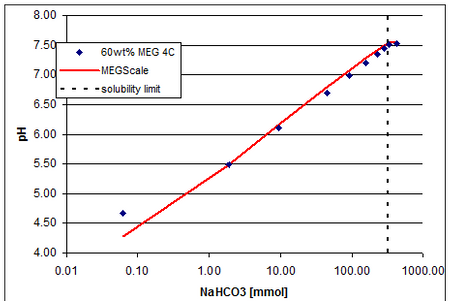MEG module
MEG - Mono Ethylene Glycol
MEG is often used as hydrate inhibitor, either in batches or with continuous injection. A typical situation with continuous injection is long subsea flowlines that transport process well fluids. MEG is then injected at the inlet of the flowline, and as the fluids cool down and water condenses out, the MEG is present and prevents hydrate formation. The aqueous phase in the flowline will therefore be a mixture of condensed water, formation water and the injected MEG solution. The injected MEG will often contain chemicals such as a pH stabilizer, corrosion inhibitor and scale inhibitor.
Presence of MEG changes the chemistry and thermodynamics of the aqueous phase. Solubility of gases change, solubility of salts change, the dissociation of CO2 changes and the pH scale is different. The MEG module is developed to capture these changes. The effect of MEG on all the different equilibria are modelled with a “MEG-effect” that is based on a large number of experimental data that covers a wide range of compositions and temperatures. Most of the thermodynamic MEG-models were developed by Dr. Kristian Sandengen (NTNU, 2006) and incorporated in the ScaleSim model.
When the MEG module is included in the license, users can add MEG to a water stream or create a separate MEG stream and mix it with water streams to model how MEG influences the scale risk at the wellhead, in a flowline or in a separator. pH stabilizers such as NaOH, NaHCO3, MDEA and others can be added to the MEG to simulate how these chemicals influence pH of the system.



